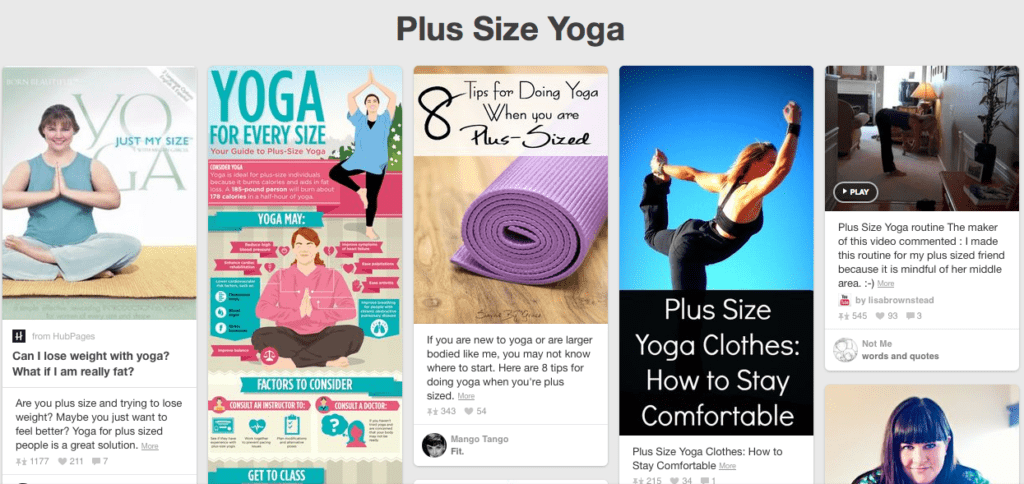We all know the classic yoga “type”: thin, white, thin, “new-age,” thin, Gumby-like limbs.
Did we mention thin?
Over the years, yoga (especially the cult-ish torture/nirvana that is hot yoga) has become the newest weight-loss craze of basics everywhere. And in that craze, people tend to forget that people of ALL sizes practice yoga.
Take, for instance, this breakdown of yoga positions for plus sizes from Alight Fashion Blog. While on the surface, this infographic may seem helpful, it assumes someone who is “plus-size” MUST want to lose weight. And, of course, anyone who is “plus-size” MUST be inflexible, unfit, and and unhealthy.
Ummm… excuse me?!
That goes against the ENTIRE ideology behind yoga which is to honor, respect, and listen to your body. Yoga is never a workout; it’s always a practice. And at the start of every class, a good yoga instructor will remind you to release all judgment not only of yourself, but of others.

Probably the only good thing to come out of this bru-ha-ha, is that Communities Digital News which covered the debacle polled a group of self-proclaimed “fit fatties.” One woman, named Marie, said that she does yoga to keep her range of motion for as long as she can because she has ankylosing spondylitis.
Yeah, that’s right. The big old ankylosing spondylitis.
Because no matter your body size, age, or whether you look “healthy,” you never know what’s going on inside someone else. Invisible illnesses are real. And this whole “othering” of people who don’t fit the yoga stereotype is disgusting.
Especially because yoga is so anti-stereotyping.
Unlike intense fitness classes that are all about pushing your body to the next level, yoga makes you look inward. You’re forced to connect with your body, respect it, and honor it.
When you have a chronic illness like ankylosing spondylitis, sometimes you feel like you’re at war with your own body. You want to do all the things you used to do, but you just can’t. Every day it feels like you have to give up a little bit of who you were to this disease. I don’t need to tell you that’s frustrating and infuriating as all hell.
But yoga gives you that place to find yourself again. Because yeah, at first, it’ll still be frustrating. You’ll see so many people who are way better at it than you are. But you’ll quickly realize that while they might thrive in certain poses, you’ll have their number in another. At first that awareness might come from a place of judgement (because let’s be real, yoga instructor, we’re judging each other), it quickly becomes an acknowledgement that all of our bodies are different. And that’s ok.
With AS and other diseases that affect the joints, yoga is a wonderful therapy. We all know stress is a trigger, and after a long stressful work day, sometimes movement seems like the last thing we want to do. But yoga provides movement and meditation and relieves stress far better than a few drinks at happy hour (especially because you probably missed happy hour trying to hit that URGENT DEADLINE).
And slowly, as you keep on with your yoga practice, you’ll realize that you are reaching those once-difficult poses.
During the day, you’ll notice that you often move with less pain. And you have to reluctantly admit that maybe your rheumatologist was right and strengthening the muscles around the joints does help.
And when you get stressed out from yet another ridiculous deadline, you’ll realize that calming meditative breath is ready to go and calm you down.
Because yoga isn’t just exercise. It’s a practice. For the mind. For the body. And for the spirit.
Share this article by clicking a social button below if you are sick of the yoga stereotypes and want it to be see as it was originally intended, connecting with oneself.


